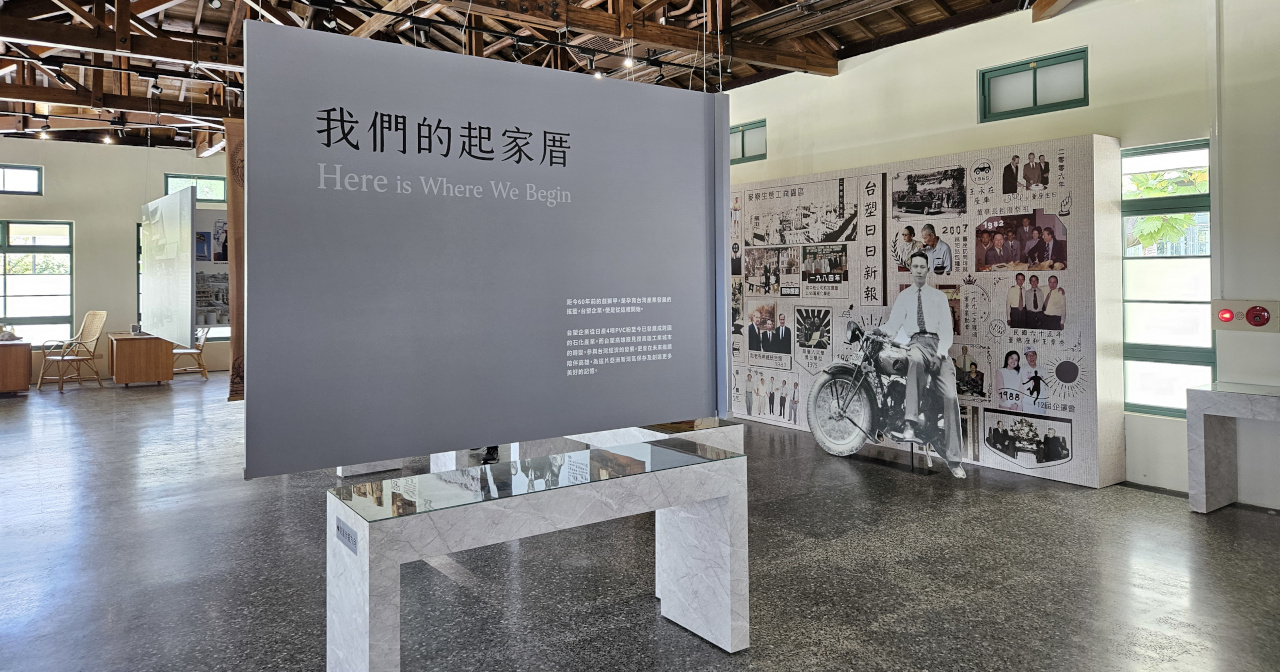Original link: https://taiwan.chtsai.org/2023/06/23/taisu_wangshi_kunzhong_gongyuan/
During the Dragon Boat Festival holiday, I visited the Formosa Plastics Wang’s Kunzhong Park , which was located at the original site of the Formosa Plastics Kaohsiung factory, and also visited several exhibition halls. When the industrial relics in the former township were gradually being demolished, Formosa Plastics declared some of the facilities of Qijiacuo as historical buildings and set up a park, which also helped the city retain the memory of industry.

The park is not big. Several renovated buildings are scattered among the green shade of old trees. There should be stores in the old dormitory one after another, but currently there are only products from Formosa Plastics’ affiliated companies. But these, like most cultural and creative parks, are hardly distinctive.

The former residence of the founder can be visited.

The bedrooms of Wang Yongqing and Wang Yongzai are on the first and second floors respectively. This is the residence of the founder when he was stationed in the Kaohsiung factory from 1959 to 1968. Now the first floor is also the visitor center.

The space of the founder’s office is planned as a pavilion. Mainly introduces the history of Formosa Plastics.

The history of Formosa Plastics is the epitome of Taiwan’s industrial development. The history of Formosa Plastics Kaohsiung Factory is the epitome of Kaohsiung’s industrial development. Being in it, especially as we are over half a century old and have experienced most of these histories firsthand, is very touching.

Another pavilion that can be visited is the plastic industry pavilion rebuilt from an early material warehouse. It mainly displays related machines and tools produced by Formosa Plastics and Nan Ya in the early stage.

The memory connection in this museum is different again. I understand the technology-intensiveness of the petrochemical industry and its contribution to the economic development of our country. But I also know that it is at the cost of environmental pollution.
I grew up in the period when Kaohsiung’s industrial pollution was the worst, and I have been particularly sensitive to environmental issues since I was a child. The stamina anti-five-light movement in 1987 was my environmental enlightenment in middle school.
On the other side of Wang’s Kunzhong Park, Zhonghua Fifth Road used to be Chuanqu. It intersects with the No. 5 ship canal, commonly known as the cross canal. When I was a child, it was a very heavily polluted area with industrial and domestic sewage. Not just cross canals. At that time, the Aihe River and Qianzhen River were also seriously polluted. In the past, there were many large and small factories in the urban area, and all wastewater (including electroplating, leather, and papermaking) was directly discharged without treatment. And all the sewage is discharged into Kaohsiung Port.
These are also history. And I have experienced it myself.

Don’t get me wrong, I’m not criticizing the park. This is a commemorative park established by Formosa Plastics. It is reasonable to emphasize the contribution of Formosa Plastics. In fact, I am grateful to Formosa Plastics. If it wasn’t for Formosa Plastics’ insistence, the Kaohsiung City Government would have demolished the Formosa Plastics Kaohsiung Plant until there were no bricks left.

Kaohsiung City has been removing the industrial relics of Qianzhen over the years, and has deliberately created a glamorous side, as if the history of industry does not exist. Of course, many things do have to be dismantled. But when you face your past with disgust instead of inheritance, when you choose to hide instead of understanding, the past will fight back.
The same is true of Xincao Ya, which is a little further south. Xincaoya is a settlement of immigrants from all over Taiwan who came to work in industrial areas. Witness the city’s transformation, only to be gradually forgotten.
Industry is the root of Kaohsiung. It promotes economic development, creates employment opportunities, but also brings environmental pollution. The value it creates and the price society pays for it are the inheritance and driving force of urban progress. Only by understanding the past can we locate the present and look forward to the future.
This article is reproduced from: https://taiwan.chtsai.org/2023/06/23/taisu_wangshi_kunzhong_gongyuan/
This site is only for collection, and the copyright belongs to the original author.